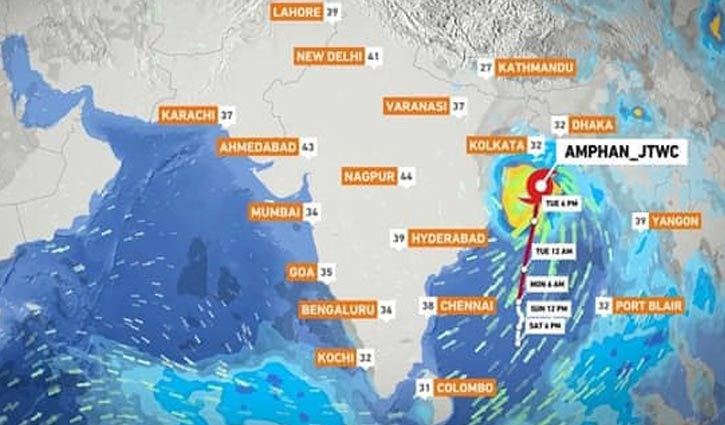Amphan eye itself occupying an area of 15 km
8 || risingbd.com

With every passing hour, cyclone Amphan seems getting fiercer. The central pressure of system, which was earlier estimated at around 975 hecta pascal (hPa), has fallen steeply to around 919 hpa during the mid-day today. For which, IMD has already categorised this swirling Amphan as super cyclone.
However, the big respite is the moment the system starts moving parallel to Odisha coast, its central pressure will increase again, and as a result cyclone Amphan will fall back to Extremely Severe Category Storm (ESCS).
As the cyclonic storm will be of the stature of ESCS during that moment, the impact will be significant on power infra and kutcha or asbestos houses. Moreover, there will be a significant wave surge and sea swelling, which could result in seawater ingress in low lying areas in the above mentioned coastal districts.
As per JTWC (Joint Typhoon Warning Centre) data, cyclone Amphan has a vast cloud structure that is spread over a massive area of 1,111 km. The eye itself is occupying an area of over 15 km, as detected in the enhanced infrared (EIR) satellite imagery. And tightly closed cloud bands are seen encircling the eye.
The eye seems getting angry as its temperature has grown warmer; whereas the cloud top temperature is still uber cool, the cloud top temperature is measured at (-) 93 degree Celsius. Eye growing warmer, and cloud top (head) remaining uber cooler suggest to the rapid intensification of the cyclone.
As per an analysis done by incumbent IMD DG Mrityunjay Mohapatra, two factors play a key role in sudden change of track of any cyclonic system.
Moreover, his analysis has also pointed out that if the translational speed of tropical cyclone falls to less than 10 km/hr for full 24 hours, then it was observed that the cyclonic system changes its track suddenly.
In the case of Amphan, as of now, this characteristic is yet to manifest. The good evidence is its intensification to super cyclone today. Had the translational speed been slower, the system wouldn’t have intensified to super cyclone.
However, next 24 hours will be more crucial, when cyclone Amphan will de-intensify to an ESCS.
Dhaka/Mukul
risingbd.com



















